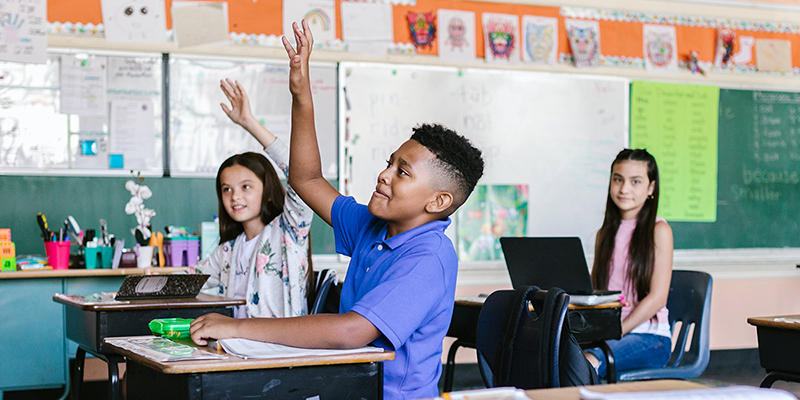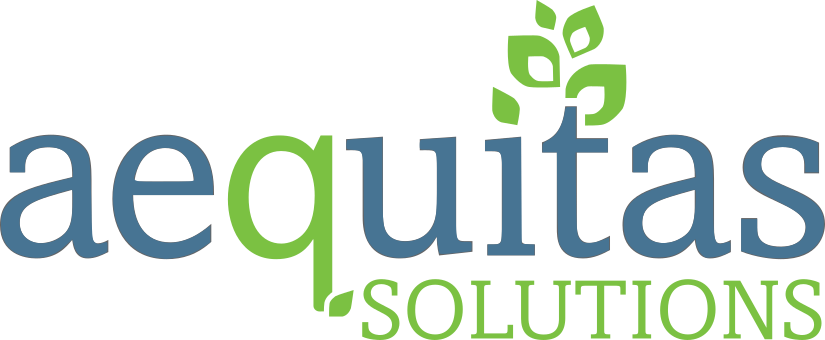The focus on K-12 education has expanded beyond traditional academic achievements in recent years. Many schools and educators recognize that students’ educational growth requires attention to more than just grades and exam scores. This paradigm shift has given rise to a growing awareness of the importance of holistic development, with educators and parents placing greater value on social-emotional learning (SEL).
Social-emotional learning is an educational approach that goes beyond textbooks and classrooms and seeks to build emotional well-being and interpersonal skills as part of the academic development plan of students. SEL acknowledges that academic success, while crucial, is just one facet of a student’s overall growth and ability to live a positive, productive adult life. The focus on SEL reflects a broader understanding that learning essential life skills is equally important in preparing students for the challenges they’ll face in both their academic and personal lives.
In this blog post, we will delve into the significance of social-emotional learning and explore how it contributes to the overall well-being of students. By understanding and promoting SEL, educators play a pivotal role in shaping not only academically successful students but also well-rounded, emotionally resilient, and socially adept members of our society.
Understanding Social-Emotional Learning
Social-emotional learning encompasses a set of skills that enable students to navigate the complexities of life successfully. These skills include self-awareness, self-management, social awareness, relationship skills, and responsible decision-making.
Self-Awareness
Self-awareness involves the ability to recognize and understand one’s own emotions, strengths, limitations, and values. Students who practice self-awareness become attuned to their emotional states, enabling them to articulate their feelings with clarity.
Self-Management
Self-management focuses on effectively regulating one’s emotions, thoughts, and behaviors. Students proficient in self-management can navigate challenges with resilience, remain adaptable in the face of adversity, and maintain a sense of composure in high-stress situations.
Social Awareness
Social awareness extends the focus beyond oneself to encompass an understanding of others and the broader social context. Students with developed social awareness can empathize with diverse perspectives, appreciate cultural differences, and navigate social dynamics effectively.
Relationship Skills
Relationship skills are the building blocks of healthy and meaningful connections with others. This component of SEL includes effective communication, active listening, conflict resolution, and the ability to collaborate.
Responsible Decision Making
Responsible decision making includes critical thinking, ethical reasoning, and the ability to consider long-term consequences. It involves weighing options, understanding the impact of choices on oneself and others, and making decisions aligned with one’s values.
The Importance of SEL in Education
K-12 school districts are increasingly recognizing the importance of incorporating SEL into various school initiatives. Lessons, activities, and assessments focusing on SEL competencies can be easily integrated into numerous subjects, providing students with practical skills that help students inside and outside the classroom.
For example, incorporating self-management in the classroom can look like task lists, time management logs, and goal setting. Teachers who want to focus on social awareness could utilize books with diversity and have students identify emotions in photos. Tasks that help build responsible decision making can include scenario-based role-playing and debates.
Incorporating social-emotional learning students’ everyday lessons can benefit students in several ways, including improved academic performance, developing lifelong skills, and contributing to their positive well-being.
Improved Academic Performance
Research indicates a positive correlation between SEL and academic achievement. When students develop strong social and emotional skills, they are better equipped to handle stress, manage their time efficiently, and engage in effective problem-solving.
Enhanced Relationships
SEL fosters empathy, communication, and cooperation. Students who are adept at understanding and managing their emotions build healthier relationships with their peers, teachers, and their community.
Lifelong Skills
The skills learned through SEL are not only beneficial in a school setting but also in the real world. As students grow into adults, these skills become invaluable assets in their personal and professional lives.
Positive Well-being
SEL contributes significantly to the mental health and well-being of students. By providing tools to cope with stress, anxiety, and other emotional challenges, schools create a positive environment that nurtures the overall well-being of students.

5 Ways to Include SEL in the Classroom
There are some easy ways educators can incorporate social-emotional learning in the classroom to ensure their students are developing these critical life skills.
1. Create a Safe and Inclusive Environment
Creating a safe and inclusive space is fundamental to the success of SEL in the classroom. Teachers should establish clear expectations for behavior, encourage open communication, and actively address bullying or exclusion.
2. Incorporate SEL into Lesson Plans
Integrating SEL into academic lessons can be seamless and effective. For example, when discussing literature, explore characters’ emotions and motivations. During science experiments, emphasize teamwork and collaboration. By utilizing SEL principles, students learn to apply these skills across varying situations.
3. Implement Mindfulness Practices
Mindfulness practices have proven to be beneficial for SEL. Incorporate short mindfulness exercises, such as deep breathing or guided meditation, into the daily routine. These practices help students develop self-regulation skills, enhance focus, and manage stress.
4. Teach Critical Thinking and Conflict Resolution
Conflicts are inevitable, but teaching students how to navigate and resolve conflicts constructively is a key aspect of SEL. Implement conflict resolution strategies, encourage open communication, and guide students in finding solutions that promote mutual understanding and compromise. Educators can also incorporate a proactive approach by teaching critical thinking, testing ideas, and encouraging healthy debates.
5. Provide Opportunities for Reflection
Reflection is a powerful tool for SEL. Incorporate journaling or class discussions that prompt students to reflect on their emotions, actions, and experiences. This self-awareness fosters personal growth and encourages responsible decision-making.
Incorporating SEL into Student Information Systems (SIS)
With the growing focus on supporting students holistically, SIS have evolved to offer features that support SEL initiatives. In particular, an SIS that is well suited for a medium or large district with a diverse student population will include features that not only track academic progress but also provide insights into students’ social and emotional development.
Tracking Student Visits and Activities
The SIS should provide districts with the ability to track student visits, like home visits and site visits. Additionally, an SIS should be able to record student activities, like whether a student is part of Operation School Bell or referrals to community agencies.
Configurable Services and Items
Districts should have the capability to configure the services and items they give to students. From PE clothes and bus passes to gas vouchers and school supplies, administrators can gain a holistic view of students’ overall well-being.
Student Wellness Reports
An SIS should be able to track information/inputs and produce reports on student wellness, including services and items given to students or their families. By incorporating qualitative and quantitative data, educators and administrators can better understand the holistic needs of each student.
At-Risk Student Identification
An SIS should have at-risk student identification features, allowing educators to configure at-risk thresholds (grades, attendance, behavior, etc.) to proactively identify students facing challenges to provide timely, individualized interventions.
Social-Emotional Learning Leads the Future of Education
Social-emotional learning is a cornerstone of holistic education, empowering students with skills that extend beyond the classroom. By integrating SEL initiatives into everyday lessons and setting up a framework to track SEL progress in Student Information Systems, K-12 school districts can take a step further in nurturing well-rounded students.
Our Wellness Center, part of our core SIS offering, is designed to complement traditional academic data with insights into students’ social and emotional development. This feature goes beyond the conventional scope of academic data tracking and provides a comprehensive platform to capture insights into students’ overall well-being.
If you’d like to learn more about how Q, our enterprise Student Information System, supports social-emotional learning initiatives, contact us for a free demo.

